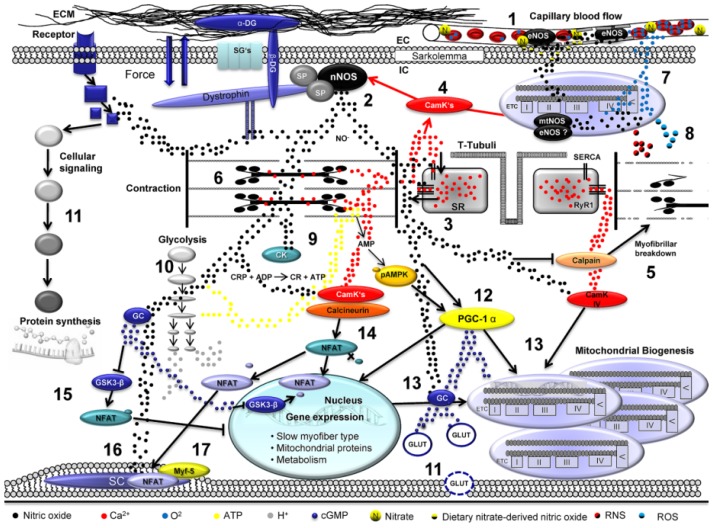Figure 2.
Mechanisms of nitric oxide in exercising skeletal muscle: (1) eNOS regulates blood flow by nitric oxide-mediated vasodilatation; (2) Neuronal NOS induces NO production in loaded skeletal muscle; (3) NO modulates RyR1 Ca2+ channel- and SERCA Ca2+ channel; (4) Ca2+ ions increase calmodulin kinase activity which also enhances NOS activity; (5) NO inhibits the activity of calpains which facilitate myofibrillar breakdown; (6) NO reversibly interacts with skeletal muscle myosin; (7) mtNOS/eNOS induced NO reversibly inhibits cytochrome-c oxidase (Complex IV); (8) NO release and oxygen turnover facilitate increased production of RNS and ROS; (9) NO reversibly inhibits creatinkinase and (10) glycolytic enzymes; (11) Nitric oxide increases glucose uptake via cGMP dependent GLUT translocation; (11) NO affects protein synthesis via modulation of cellular signaling pathways and (12,13) increases in interplay with AMPK enhanced PGC-1α activity. NO enhances the activity of calmodulin kinases also contributing to mitochondrial biogenesis; (14) Ca2+ triggers activity-induced myofiber conversions (for details see text); (15) This mechanism is supported by nitric oxide-mediated cGMP generation; (16) NO increases the proliferative activity of quiescent satellite cells in skeletal muscle (17) also by increased expression of Myf5 (for details see text).

